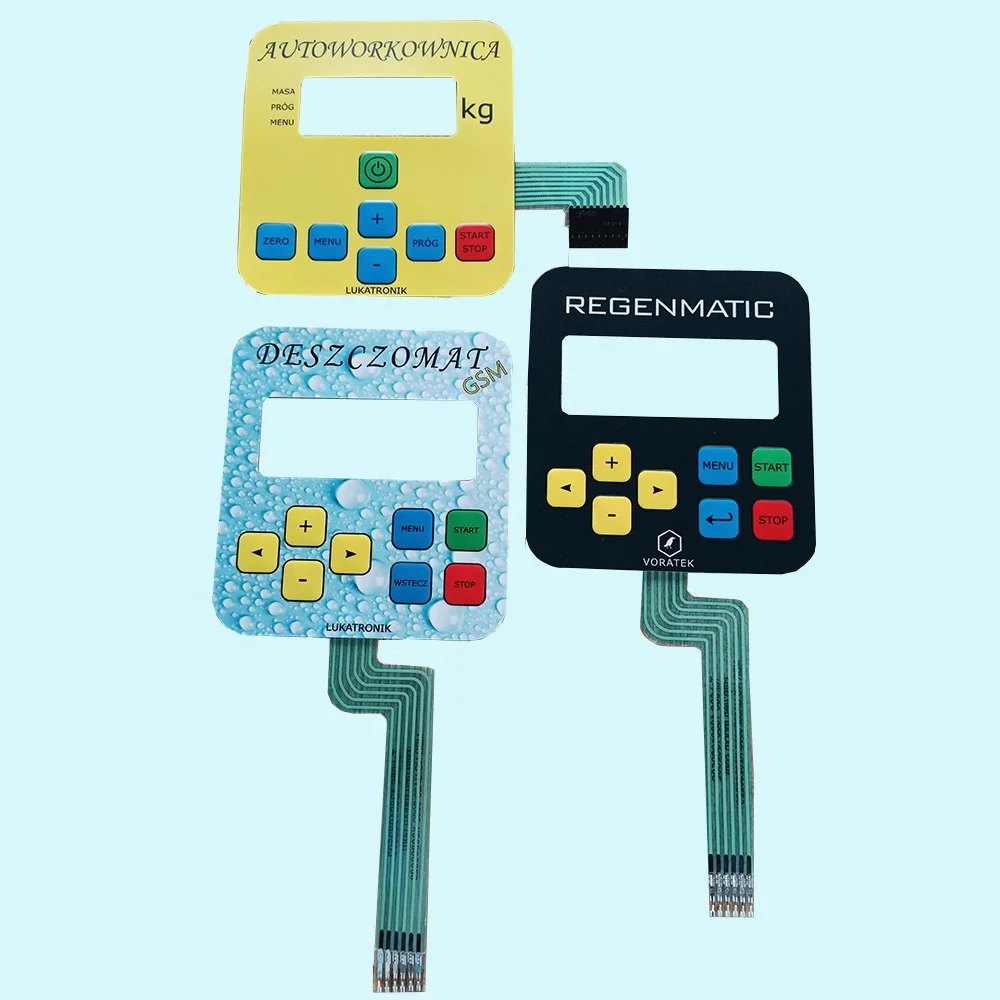The Role of Membrane Switches in Enhancing Device Functionality
The Role of Membrane Switches in Enhancing Device Functionality
Blog Article
Comprehending Membrane Switches Over: The Secret to Trustworthy and resilient Controls

What Are Membrane Switches?
Membrane switches are an innovative service in the world of individual interface innovation, integrating performance and design seamlessly. These gadgets work as a user interface between users and digital systems, integrating numerous components right into a portable style. Typically built from versatile, slim layers of products, membrane buttons are created to reply to touch, enabling customers to communicate with machinery and digital tools efficiently.
The main aspects of a membrane button include a published circuit layer, visuals overlay, and a spacer layer that stops unplanned activation. The graphic overlay can be customized to show brand name identity or customer preferences, boosting visual appeals while making sure functionality. Membrane buttons are generally used in numerous applications, consisting of medical tools, consumer electronic devices, and industrial devices, owing to their resilience and resistance to ecological aspects such as dampness and dust.
Among the key benefits of membrane buttons is their capacity to withstand deterioration, making them ideal for high-traffic atmospheres. In addition, they are lightweight and call for marginal space, enabling for innovative styles in item growth. Generally, membrane layer switches over represent a sensible and efficient selection for modern-day electronic interfaces, weding innovation with user-centric style principles.
How Membrane Layer Switches Over Work
The operation of membrane changes hinges on a basic yet efficient device that converts customer input right into digital signals. When a user presses the switch, the leading layer flaws, enabling a conductive element in the circuit layer to make call with a corresponding conductive pad on the underside of the visuals overlay.
The style of membrane layer switches can differ, yet they typically integrate domes or responsive aspects to give responses to the individual, enhancing the general experience - membrane switch. The materials utilized in membrane layer buttons, such as polyester or polycarbonate, add to their longevity and resistance to ecological elements, consisting of wetness and dirt. Moreover, the published circuits are normally enveloped, which secures them from damage in time.
Benefits of Membrane Layer Buttons

Additionally, membrane layer switches are understood for their sturdiness. Built from robust materials, they are immune to dirt, dampness, and physical wear, which substantially prolongs their lifespan compared to standard mechanical buttons. This resilience makes them specifically suitable for high-traffic settings and applications requiring long life.
Another substantial benefit is the convenience of cleansing and maintenance. The smooth surface area of membrane layer changes reduces dirt build-up and is often unsusceptible spills, making them suitable for settings that need frequent sanitization.
Furthermore, membrane buttons offer a structured profile, leading to a thinner design that can be integrated into different devices without adding mass. This feature not only improves the aesthetic appeal however also contributes to an extra ergonomic product design.
Applications of Membrane Layer Buttons
Straightforward and versatile, membrane layer buttons find applications across a large range of markets, consisting of clinical devices, consumer electronics, and commercial tools. In the medical area, these switches are integral to devices such as analysis equipment, individual surveillance systems, and mixture pumps, where dependability and ease of cleaning are crucial. Their capacity to maintain and endure harsh environments capability makes them optimal for such applications.

In consumer electronics, membrane buttons are made use of in products like microwaves, washing equipments, and push-button controls - membrane switch. Their streamlined layout enables instinctive interface, enhancing the overall user experience while supplying longevity and resistance to deterioration
Industrial devices additionally benefits from membrane buttons, particularly in control panels for equipment and automation systems. These buttons supply defense against dirt and dampness, guaranteeing constant efficiency in tough environments. In addition, their personalized functions enable producers to tailor them to details functional requirements, boosting performance and performance.
Selecting the Right Membrane Switch
When selecting a membrane layer switch, it is vital to consider numerous variables that affect efficiency and suitability for particular applications. The main factors to consider include ecological problems, responsive comments, longevity, and design specifications.
First, assess the operating environment; buttons revealed to dampness, pop over to this site chemicals, or severe temperatures need details products to guarantee long life and performance. Next off, evaluate the demand for tactile comments. Depending on customer communication, some applications might take advantage of a responsive reaction to verify activation, while others might choose a non-tactile design for visual reasons.
Resilience is one more critical element; membrane switches must be designed to endure constant usage, effects, and abrasion. Ensure the picked switch can withstand the anticipated lifecycle, especially in high-usage situations.

Verdict
Finally, membrane layer switches over work as important parts in the layout of durable and dependable control systems throughout various sectors. Their compact layout, combined with robust building and construction and adjustable features, improves individual communication while making sure longevity sought after atmospheres. The versatility of membrane layer switches permits for customized services that meet specific this content operational requirements, reinforcing their value in modern-day technology. As industries remain to progress, the significance of integrating efficient membrane layer switch services can not be overemphasized.
Membrane switches stand for a critical element of contemporary interface layout, mixing functionality with resilience in various applications.Membrane layer buttons are an innovative service in the realm of user interface technology, integrating functionality and layout effortlessly. Commonly built from flexible, thin layers of materials, membrane layer switches are developed to respond to touch, making it possible for customers to communicate with machinery and electronic tools efficiently.
The layout of membrane buttons can vary, but they often integrate domes or responsive elements to offer responses to the user, enhancing the general experience.In verdict, membrane layer switches serve as important parts in the layout of reputable and durable control systems across different industries.
Report this page